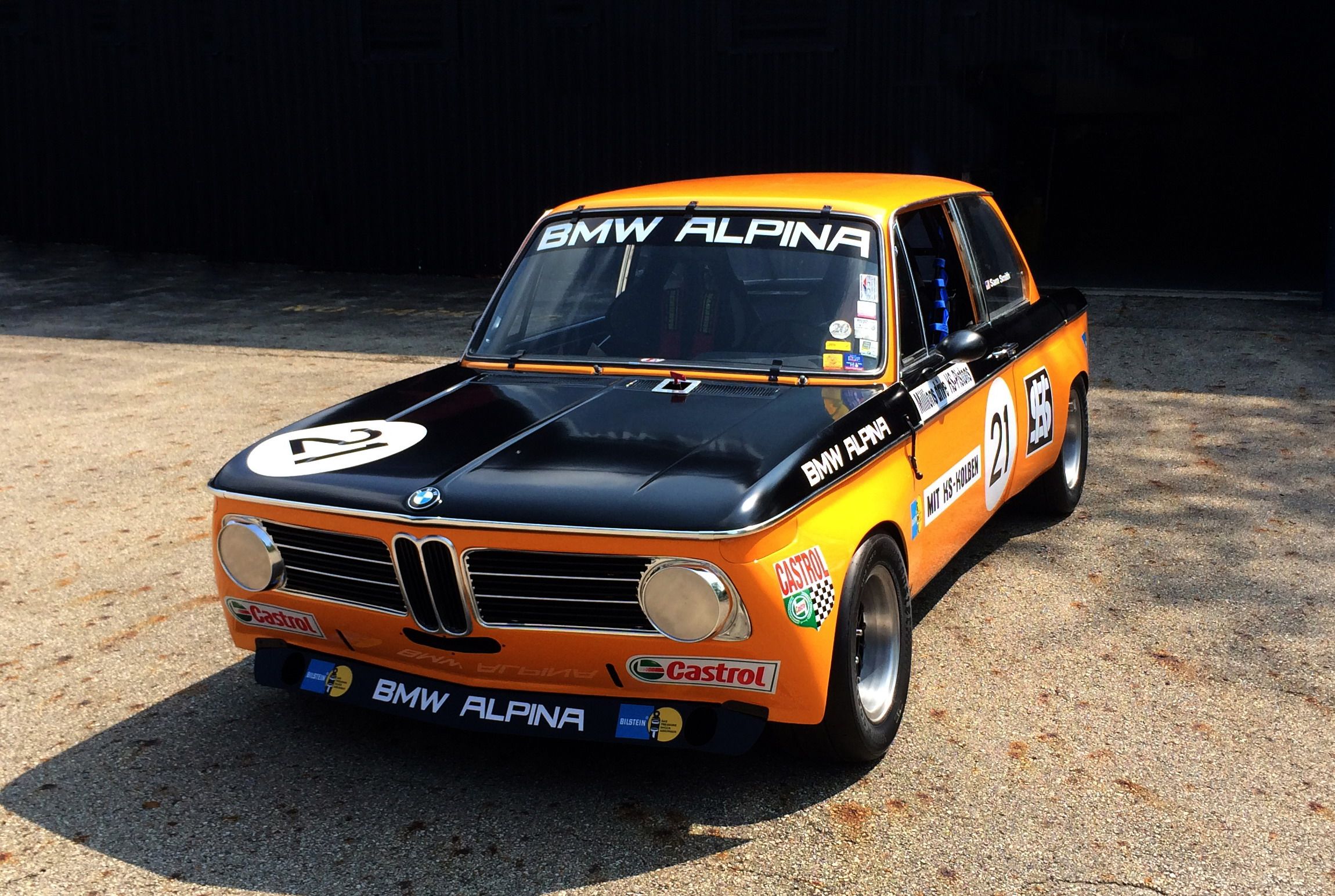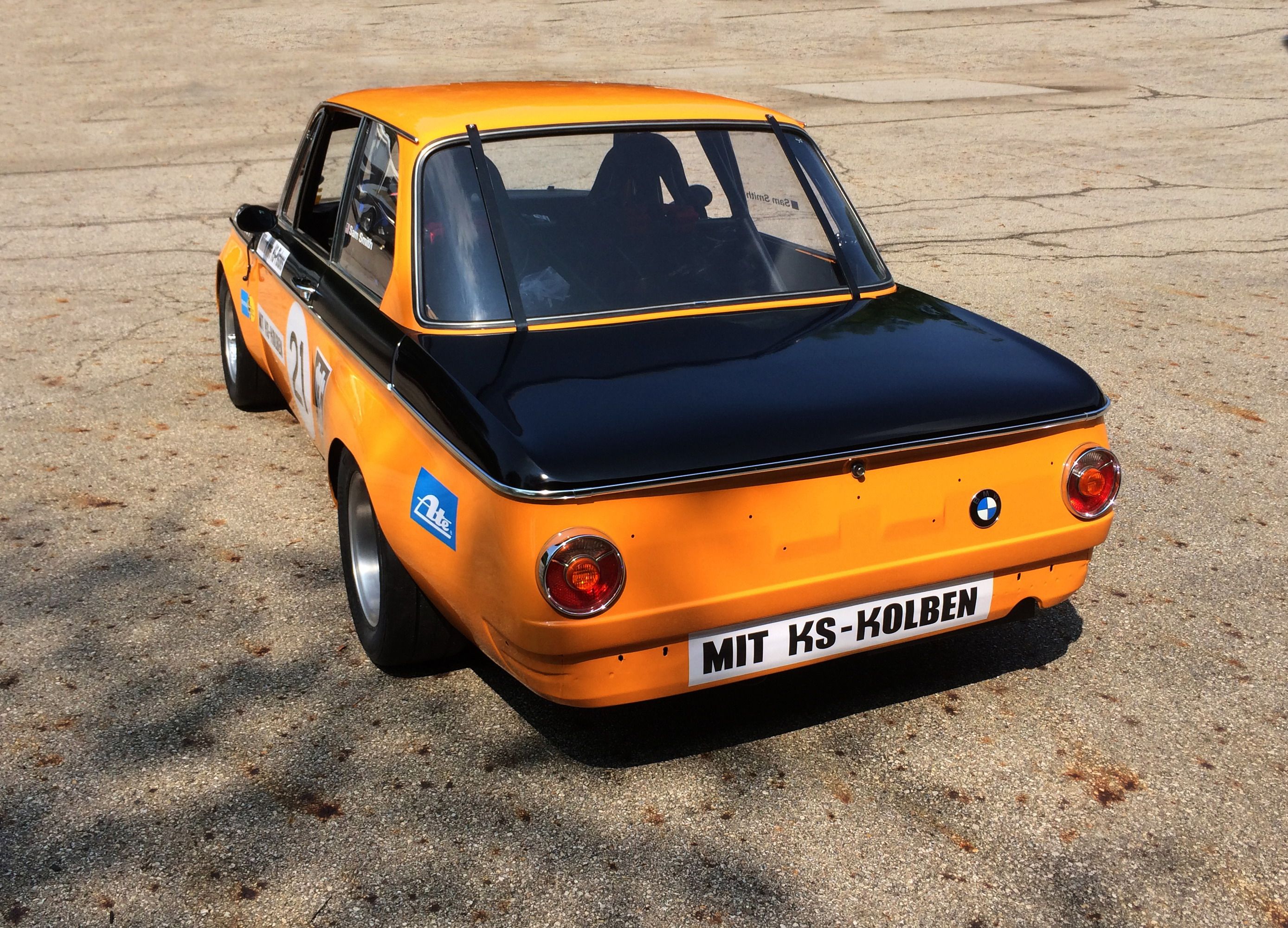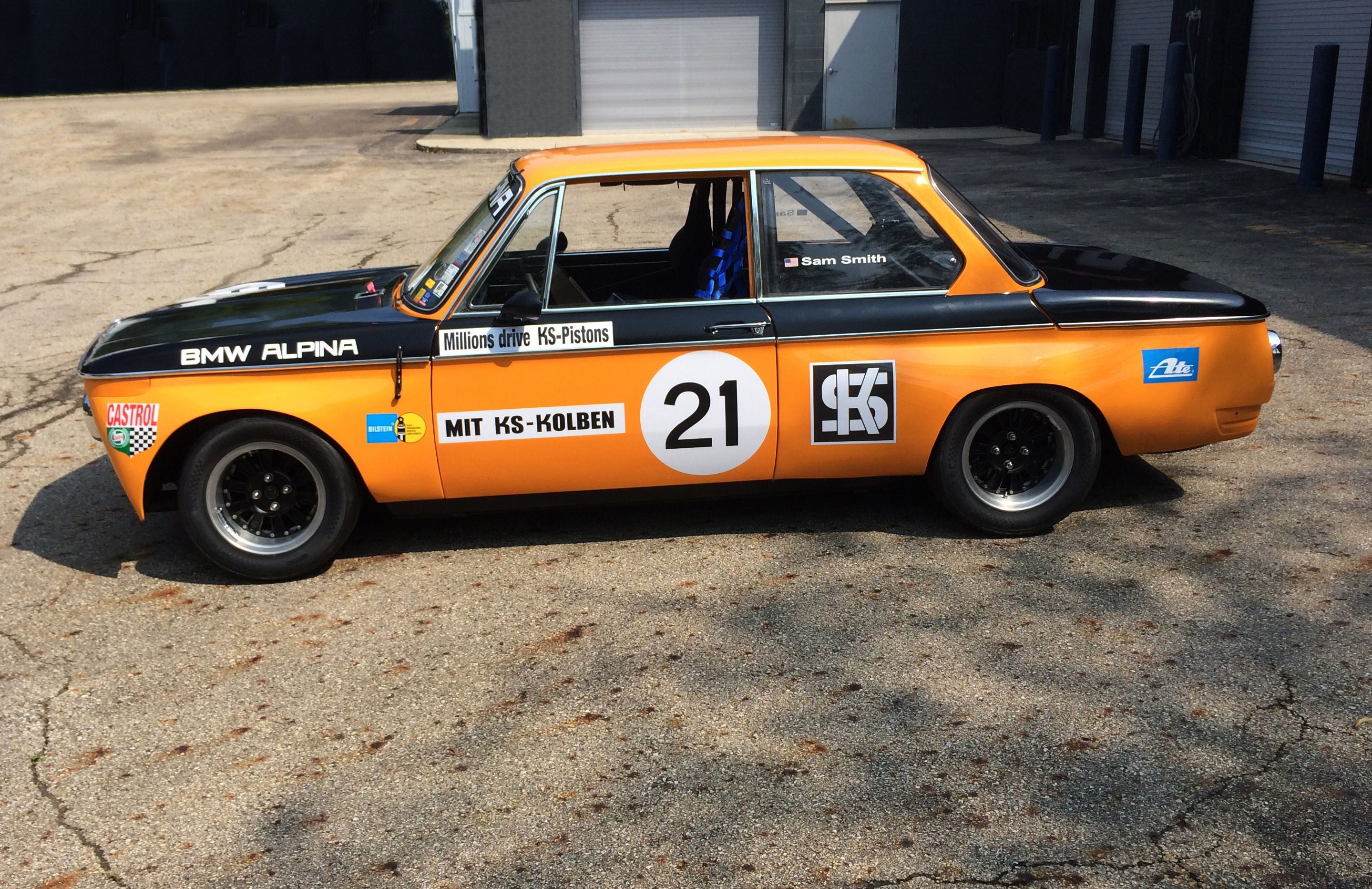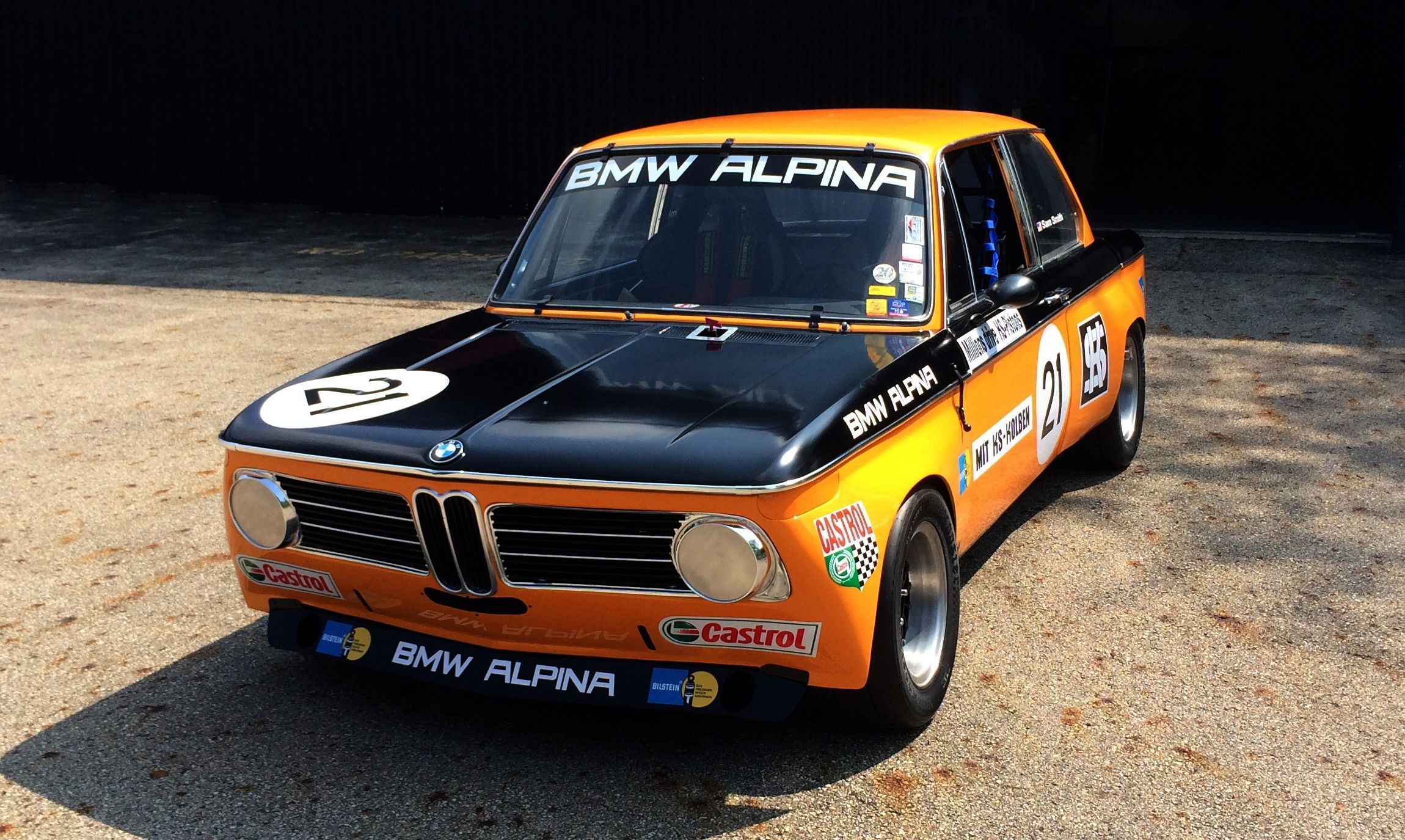The BMW->ke178 2002 was a bit of an oddball when it came to American shores. The compact, boxy two-door clashed with the sizable American iron that prowled the roadways, and it’s low-displacement inline-four had a hard time keeping up with the big V-8 engines. However, what it lacked in power, the 2002 more than made up for in the corners. Its low weight and dynamic handling characteristics made the 2002 ideal for just about any motoring event involving turns.
One such event was SCCA Trans Am racing. The first few years of the 70s are typically referred to as the latter half of the “golden years” for SCCA Trans Am, with classes that featured production cars you could actually walk into a showroom and buy.
This particular 2002ti was built to compete in that series with the help of legendary BMW performance specialist company Alpina->ke1232. The car features several Alpina upgrades, including a Weber side-draft carburetor setup and three-piece alloy wheels. The fenders are stuffed with extra rubber, and the engine has been tinkered with to give the Bimmer a little more speed down the straights.
The car ran in the ’71 and ’72 seasons before reaching retirement. It was then put into storage for nearly a quarter century before BMW resurrected it with new livery for the 1996 Monterey Historic Races.
In August 2014, the Bimmer was back at Laguna Seca->ke981, this time with Road&Track Executive Editor Sam Smith at the wheel and its original Alpina orange-and-black paint on the sheet metal. It's a real treat seeing this old-school racer on full attack, slipping around its competitors and charging the corkscrew. You can check out the video of Smith in action here.
Click past the jump to read more about the 1970 BMW Alpina 2002ti.
1970 BMW Alpina 2002ti
- Make: Array
- Model: 1970 BMW Alpina 2002ti
- Engine/Motor: inline-4
- Horsepower: 220 @ 8000
- Transmission: 5-speed manual
- [do not use] Vehicle Model: Array
Exterior
The 2002 employs a pretty straightforward exterior when it comes to styling. Nothing frilly or extraneous; just simple, boxy lines from hood to trunk. On this particular example, the alloy wheels are wider than stock, the fenders are flared out to accommodate larger race tires, and the livery resurrects its Trans Am heritage, plus there are some light aero enhancements to make it a bit more slippery. Some of the chrome trim is retained for extra style points. Note the iconic BMW grille; that twin design can be seen throughout BMW’s evolution, growing in size and length through the years.
1970 BMW Alpina 2002ti - Exterior Dimensions
|
Weight |
Approx. 1990 lbs. |
|
Length |
166.5 Inches |
|
Width |
64.0 Inches |
|
Wheelbase |
98.4 Inches |
Interior
As expected, the inside of this racecar is all business: bucket seats, harnesses, window net, and a roll cage. The large steering wheel was returned to Alpina for restoration, and now sports brand-new hand stitched leather to assist in oversteer corrections.
Drivetrain
Alpina has a long history of creating high-performance versions of BMW’s most popular cars, and this 2002 represents genesis for that tradition. The uncorked four-cylinder puts out around 220 horsepower, which is a healthy figure for a vehicle that weighs less than a ton. And when you consider that this car is almost 50 years old, getting the motor to spin to 8,000 rpm is pretty impressive as well. Alpina clearly did good work to keep this Bimmer hanging with the more powerful cars in the straights.
1970 BMW Alpina 2002ti - Drivetrain Specifications
|
Engine Type |
SOHC, 8-valve 4-Cylinder, Twin Side-Draft 2-Barrel Weber Carburators |
|
Displacement |
1,990 cc |
|
Bore x stroke |
89 mm x 80 mm |
|
Power output |
Approx. 220 HP @ 8,000 RPM |
Prices
If you want to build your own lithe 70s racer, or if you just like the idea of a 2002 for the street, you’re in luck: there are plenty available to purchase on the used car market, from old beaters for a few grand, to perfectly restored $25,000 show-stoppers. If you want a fun, compact classic, the 2002 is a great choice.
Competitors
Datsun 510
Pictured model is not the SCCA Trans Am model
In the battle of the speed boxes, the 2002 had some stiff competition running against the 510. There were plenty of similarities between the two: front-engine, rear-wheel-drive, light body, and small, torquey motor. However, with the likes of driver John Morton behind the wheel, the 510 ran away with the championship in ’71 and ’72.
Alfa Romeo Giulia GTA->ke3472
The Italian entrant in SCCA Trans Am clinched a championship win in 1970, and stayed on as a frontrunner for ’71 and ’72. At the time, Alfas->ke1386 were quite popular amongst both privateers and professional race teams around the world, with it’s racing division Autodelta preparing competition versions of Alfa’s street cars for road races and rally events.
Conclusion
The Alpina 2002ti is a throwback to a simpler time in racing, when anyone with a few bucks and a passion for going fast could take a trip to their local dealership and buy, more or less, the same car they saw trading blows on the track. Nowadays, the fires of competition have pushed the limits of what an automobile is capable of, and for better or worse, there is a disconnect between what you cheer for on track and what you can drive around on the street. Modern race cars are like spaceships compared to these older models, but when the flag is dropped at events like the Rolex Monterey Motorsport Reunion, the glory days are brought back to life over the sound of carbureted motors.





